The Evolution of Money in the American Colonies (1607 - 1690) (Money in Colonial Times )
The Evolution of Money in the American Colonies (1607 - 1690) Money in Colonial Times WampumShells to Pine Tree Shillings: Exploring the Evolving Forms of Currency Used by Early American Settlers
Most of the texts I used in this post are taken from the following two great books.
Jonathan Barth- The Currency of Empire_ Money and Power in Seventeenth-Century English America-Cornell University Press (2021)
Dror Goldberg - Easy Money_ American Puritans and the Invention of Modern Currency-University of Chicago Press (2023)
Eight decades of monetary exploration in the leading first colonies culminated in the 1690 invention of modern money in Massachusetts. The large variety of objects which were used by the various colonies includes furs, wampum, tobacco, rice, grain, beef, flour, hemp, peas, timber, fish, tar, pitch, cattle, dairy produce, musket balls, etc. As in other early colonies, the development of commodity-currencies was due to the extreme shortage of coins.
The Shortage of Coins
Apart from the economic factors causing this shortage, it was aggravated by the prohibition of the export of coins by England and, after 1684, by the prohibition of the operation of mints in the colonies. Even if the colonies possessed gold and silver bullion—either mined or imported—the Crown prohibited them from minting their own coins, i.e. specie money. Every colony started with little coin, because individual colonists did not bring much coin. There was nobody around to buy from (except Indians, who preferred other objects), and most colonists worked for the same company or cooperative. The colonies exported too little and imported too much. Their export of products such as tobacco and fur was not enough to pay for imported goods, so they settled the deficit with coin. Then there was no coin left for internal trade within each colony. Why coin was used so much in buying imports ? The colonists can buy with it either a local good or an imported good. It could be optimal to use the coin for an imported good because a local good could be obtained through barter, especially “efficient barter” of a store’s book credit.
Copper
The colonists regularly used copper to obtain all their food from Indians. They forced a copper- for- food trade during a failed expedition to find copper mines. You will find the curious details about bilateral relations in this book1.
Copper was perhaps not exactly money, because it did not circulate between the societies; it flowed from the English to the Indians on a one- way ticket.
Indeed, colonists documented copper and beads as dominating intra-Indian transactions: pay for labor, for service in war and heroism in war, for taxes, for tributes to king and gods, and for brides (the latter with the terms buy, sold, pay, and price).
Usually, copper served transactions of high economic value, while beads were for traditional and symbolic transactions. The chief who betrayed Pocahontas was rewarded mostly “with a small copper kettle.”. Thus the daughter of Powhatan was sold for copper.
Glass Beads
The colonist understood that the glass beads are other important item in the trade with indians. The glass beads2 shipped from England and started to use in directly trade. American Indian groups across the continent used glass beads as adornment objects, though their exact use varied somewhat by region and time period. shell beads were sold in North America. France exported large quantities of beads to England and North America
Columbus brought glass beads on his first voyage, and they continued as part of the economic and cultural exchange through the nineteenth century.3
Fur
Another Indian- related money was fur. In the very beginning, colonists illegally traded the colony’s tools and arms to Indians in exchange for furs, then traded the furs for food and alcohol clandestinely provided by individual sailors of supply ships. Fur functioned as money in the limited sense that colonists regularly accepted it from Indians only for purchasing European goods. The later martial law outlawed4 all trade with any outsiders. Scotsman David Kirke, who occupied Canada in 1629 as part of the Thirty Years’ War, treated fur as money.
Wampum
Wampum was used for monetary purposes by the settlers because it was the chief currency of the Red Indians. In their trade with the Indians the colonists had to use wampum, and since the possession of this currency enabled them to obtain from the Indians various objects they needed for use or for export, it soon became generally acceptable also in dealings among the colonists themselves. In Massachusetts wampum was introduced as a currency in 1627. In 1637 wampum was made legal tender at the rate of 6 white or 3 black beads per penny for sums under 1 shilling. In 1643 wampum was made legal tender for sums not exceeding 40 shillings.
This is the perfect explanation5 on the rise and decline of the wampum.
Wampum belts were first used for intercultural contacts and exchanges between Native Americans and Europeans—the French, followed by the Dutch and the English—and then between various Native American groups: first between Algonquians and Iroquoians, and then between Northern (St. Lawrence Iroquoians, Huron, Neutral, Erie and Petun) and Southern (Mohawk, Oneida, Onondaga, Seneca and Cayuga) Iroquoians.6 Some contemporary observers and later historians mistakenly believed wampum to be “the common Indian currency” and the “moneyed medium among the natives,” but as historian William Cronon notes, wampum functioned more as a “medium of gift giving” among Indians than as a medium of commerce.
Tobacco
Virginia colonists bartered their tobacco directly with European ships in exchange for European goods. Tobacco was one of the prominent commodities in monetary relationships during the U.S. colonial era. The 1619 assembly used monetary units (i.e., pounds, shillings, pence) in most laws, but its tax was denominated in tobacco. By 1624, tobacco was referred to by colonists as “our money,” and, “Tobacco . . . passes there as current silver.”
The transition to tobacco was simultaneous with a transition from a cooperative garrison to a privatized democracy. When plots were privatized, the rent was paid in the wheat and the tobacco. Instead of salaries in coin, officials were given half the produce made by company servants on company land.
Corn
The corn was first treated as a commodity, but soon became the unit of account and medium of paying taxes, peaking as money in 1624.
Governor William Bradford noted:
Jonahtan Barth’s book7 gives the important references in this issue.

Hogge Money
Between 1616 and 1619, settlers in the Bermuda colony utilized a metallic currency minted in England and designed exclusively for the Bermuda islands. The composition of the Bermuda coinage was a low-grade brassy copper, brimmed with a thin wash of silver to enhance its appearance. A wild boar appeared on the front of the coin, commemorating the multitude of feral hogs discovered on the island by the English castaways in 1609; on the reverse of the coin was the famous galleon that had shipwrecked off the island’s coast. The “hogge money,” as people called it, fell out of favor sometime around 1619, after tobacco became the island’s predominant currency; the minting of copper tokens terminated shortly thereafter.
Pine-Tree Shilling
In May 1652 the Massachusetts General Court authorized the coinage of a new silver currency. The Massachusetts pine-tree shilling was one of the most remarkable productions of the seventeenth-century Atlantic world. It was the boldest expression of colonial autonomy and colonial sovereignty in any era preceding the American Revolution. In the most palpable manner, it drew broad attention to the fact that a prominent, proud, and outspoken faction within the Massachusetts Bay Colony considered themselves independent of practically all authority in England.
The species of tree varied throughout the mint’s history: a willow tree (1652–1660), an oak tree (1660–1667), and most famously a pine tree (1667–1682). It was during this latter period, if not earlier, that the coins became known as “pine-tree shillings,” though people also commonly called them “Boston shillings” or “Bay shillings.”
The same year, 1652, the General Court decreed that all freemen take an oath of allegiance to Massachusetts, with no mention whatsoever of any political fealty or ties to England. Political autonomy and monetary autonomy were inextricably linked.
The mint was closed by the English government in 1682 and the Colony's charter was revoked two years later by Charles II.
Conclusion
The colony’s main harvest became its internal physical money and usually also its unit of account: beaver fur in Canada, fish in Newfoundland, corn in Plymouth, tobacco in Virginia and the southern islands. Monetary items that were considered valuable only to Indians— copper and seashell beads— did not circulate within colonies. In May 1652 the Massachusetts General Court authorized the coinage of a new silver currency. It was the start of a revolution.
Engin YILMAZ (
)Sources
(Original Narratives of Early American History_ 5) Lyon Gardiner Tyler - Narratives of Early Virginia 1606-1626-Charles Scribner's Sons (1907)
DETECTING PREFERENCE IN THE ARCHAEOLOGICAL RECORD: A STUDY OF GLASS TRADE BEADS AMONG THE NATCHEZ INDIANS, Link
When the first European explorers came to North America, they hoped to find vast amounts of gold and silver, Link
WHAT IS PRIMITIVE MONEY? (Barter merges into primitive money and primitive money into modern money), Page:280
Jonathan Barth_ Arizona State & George Mason - The Currency of Empire_ Money and Power in Seventeenth-Century English America-Cornell University Press (2021)

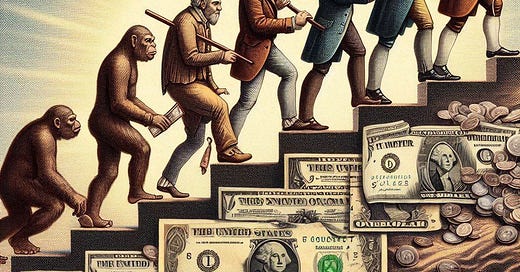



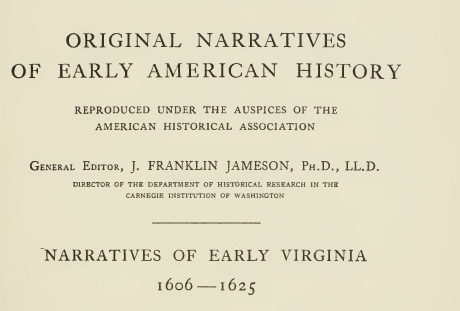



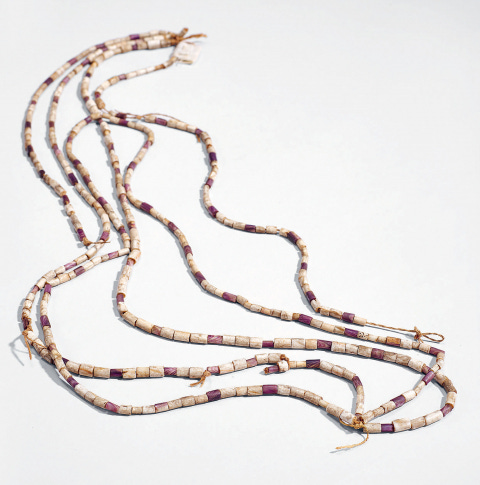
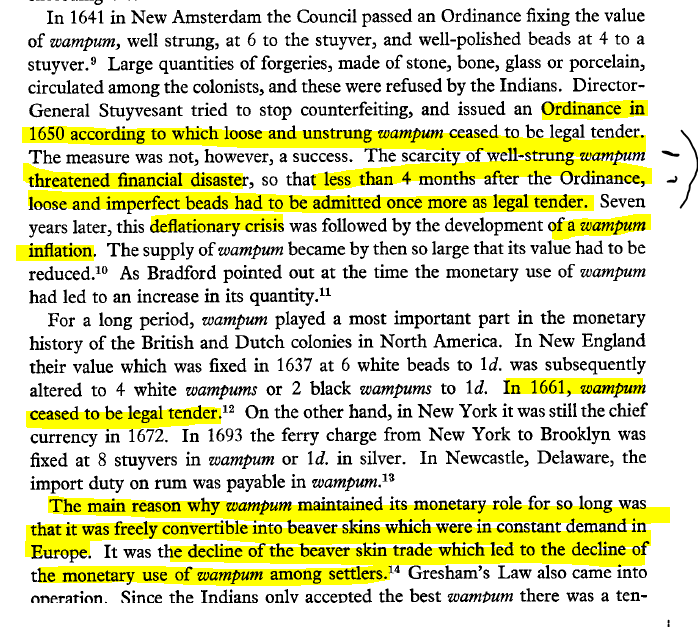



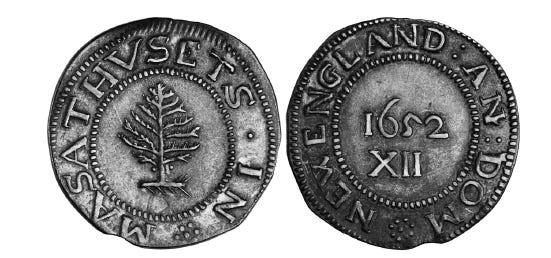
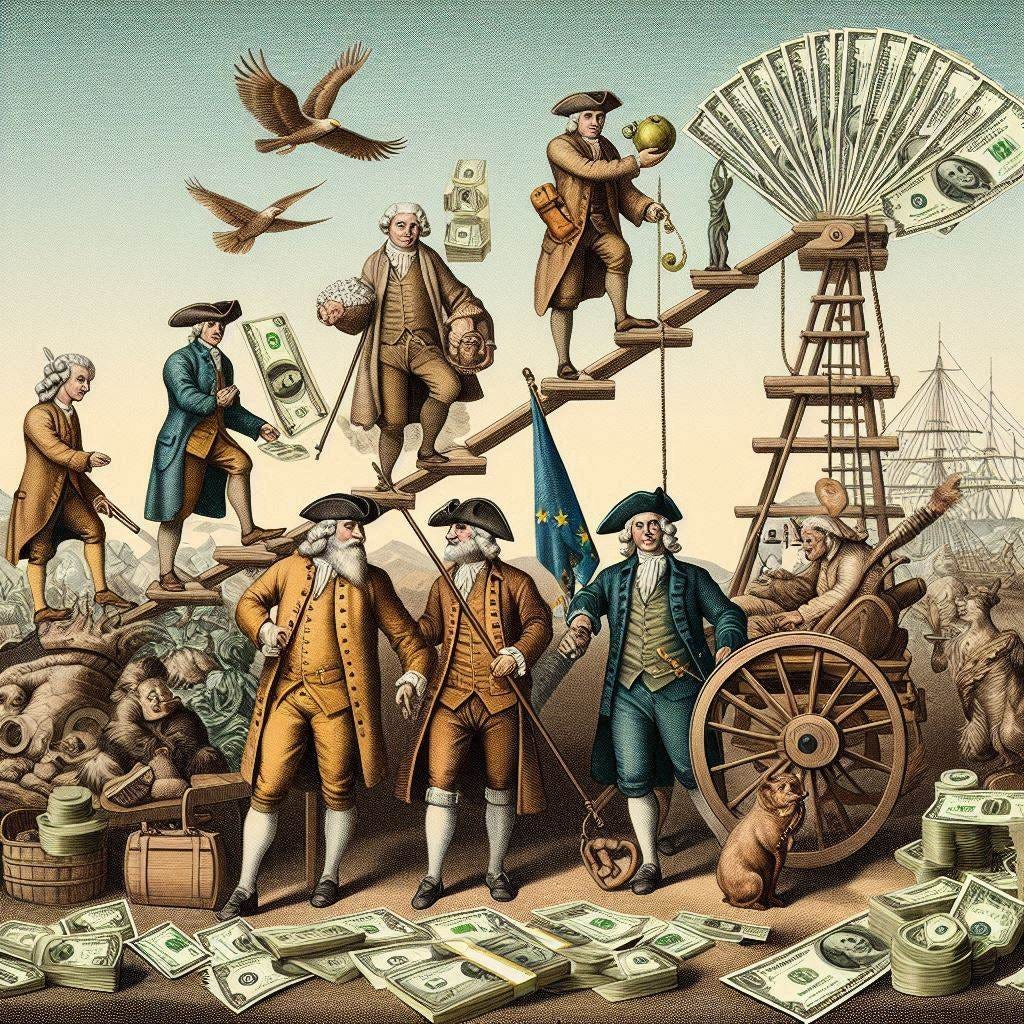
Many of these smaller pieces of copper were likely the byproducts of artisans making copper items back in England, but some may also be from the colonists producing trade ornaments. The heavy volume of copper at the fort site is a clear indication that the English came prepared to trade with the Virginia Indian population. The experience of the Roanoke colony several decades prior to Jamestown taught the English that the Indians in the region highly valued the metal. Source: https://historicjamestowne.org/collections/artifacts/copper/
Is there any reason why copper? Because it’s kind of shiny?